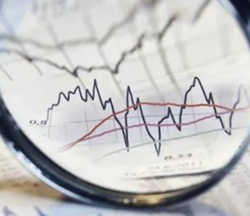Picking up a book and reading the words is the easy part. Most of us never get beyond this level. It is obvious, therefore, that syntopical reading is the most active and effortful . To this the major answers are 1) yes, 2) no, 3) we cannot know. Using Basmo can help you master this skill a lot quicker and become a lot more efficient. Basmo helps you stay organized. Inspectional reading is a style of reading where you inspect it: You look at all the parts, read the headings and the first sentences, and generally familiarise yourself with the work. . The point of inspectional reading is to examine the surface of the book. Weve been taught that skimming and superficial reading are bad for understanding. The last part of the book covers the fourth level of reading: syntopical reading. Syntopical Reading involves reading many books on the same subject and comparing and contrasting ideas, vocabulary, and arguments. like. The third level of reading is called analytical reading, which goes deeper than inspectional reading. The spacing effect demonstrates that learning is more effective when study sessions are spaced out. Your email address will not be published. Spacing effect and Spacing Repetion directed to enhance quality of remembering the read material in a long run. But mere comparison of texts is not enough. Its not going to give you an edge, make you better at your job, or allow you to avoid problems. Some reading tasks require no more than skimming. The final section of the book, "The Ultimate Goals of Reading", focuses on syntopical reading and the concept of reading and the growth of the mind. According to Adler and van Doren, the syntopical reader applies analytical reading to multiple books, articles, documents, etc. Reduce your reading speed for difficult passages. Syntopical reading aims to compare books and authors to one another, to model dialogues between authors that may not be in any one of the books. Please check back later. Another name for this level might be comparative reading. The syntopical reading definition states that this technique involves proper research done from multiple sources on a certain topic. On this level of reading, the reader grasps a book and works at it until the book becomes his own. If youre reading for entertainment or information, youre going to read a lot differently (and likely different material) than reading to increase understanding. Learning something insightful requires mental work. It is the most complex and systematic type of reading of all. I call it basic reading; others call it elementary reading. And they can do it without becoming tedious because theyre always challenging enough to remain interesting and fun. Whereas the question that is asked at the first level is What does the sentence say? the question typically asked at this level is What is the book about? That is a surface question; others of a similar nature are What is the structure of the book? or What are its parts?. If youre like most people, you probably havent given much thought to how you read. Syntopical Reading This is the compare and contrast phase of reading where you use multiple examples and readings "whole" ideas and examine them relative to one another. That means youre reading for information. This is the final stage of syntopical reading, the part where you are informed enough to have your own thoughts and opinions about a certain topic. For instance, your preview of Money: Master the Game book might lead you to ask question like, How to reduce my tax fees by 10%?. 4 Ways to Read a Book: How to Get the Most out of Reading. Syntopical reading is what I find myself doing in those time gaps. Syntopical reading involves more. However, if you are reading to improve understanding, analytical reading is entirely necessary. Before we can improve our reading skills, we need to understand the differences in the reading levels. Many of the important works may not be obvious, since they may not have the keyword in their titles. A thorough understanding of the levels of reading is necessary before we can improve our reading skills. You will understand this particular book, but you may miss out on comprehending others on the same topic. Preparation phase During the preparation phase, you compile a bibliography. As a demanding reader, you exert effort. more Grammar and declension of syntopic syntopic ( comparative more syntopic, superlative most syntopic) more Sample sentences with " syntopic " Declension Stem In flight it would not contrast as much as the syntopic white-winged duck. You cant be enlightened unless you are informed, however you can be informed but not enlightened. In the end, youre just making an author use your vocabulary instead of his own. Lets hit the books and explore the following: I bet you already know how to read a book. Its the hard books that count. But mere comparison of texts is not enough. It consists of a large number of separate acts, all of which must be performed in a good reading. I have a big A4 format 100 sheets notebook for that. For a more detailed description and an accompanying worksheet, see Writing Theology Well, Chapter 6, 116-118. If necessary, reread the text. While many people are proficient in reading for information and entertainment, few improve their ability to read for knowledge. How to be a better critic of what you read, Why you should read a novel differently from a nonfiction book, How to understand the crux of a book in just 15 minutes. Here's what you'll find in our full How to Read a Book summary : Hannah graduated summa cum laude with a degree in English and double minors in Professional Writing and Creative Writing. Tell or write notes of what you remember about the main idea and key points of the reading. Another name for this level might be comparative reading. This is all about identifying and filling in your knowledge gaps. It is the most complex and systematic type of reading of all. I would like to add here that the best practice of reading is syntopical reading. No wonder I lose track of time. In your notes, underline or highlight the important points. And how you read makes a massive difference to knowledge accumulation. Lets assume for the sake of this explanation that you want or need to learn how you can deal with having a partner struggling with depression. That often branches to another topic, and another, and another. Do you consider the writer your superior when it comes to knowledge in the subject? That doesnt mean you agree with them, only that you understood them. every ten minutes, every chapter). Write down any questions you may have after preview stage. The most challenging step in syntopical reading is undoubtedly this one. Analytical and Syntopical Reading. This syntopic blend of online reading and search gives a kind of reading-in-depth that hasnt been possible before. You start actually reading the book, paying close attention to every single detail. Weve been taught that skimming and superficial reading are bad for understanding. If youre not interested in reading Adlers book but you want to know how to conduct syntopical reading, then let me have a moment on the moral high-ground: Shame on you. Analyzing the discussion. The first step in this research process is to identify the relevant passages that you will need to examine in order to gain the necessary level of understanding of the topic. Another term for it would be comparative reading, but the process involves reading and comparing multiple texts on the same topic. Note the questions you got wrong or didnt answer and focus extra attention on the content related to them. Not only does this prime our brain with the material in the book, but it helps us determine if we want to read the entire book. 8 shows an example of a syntopical graph representing context of a set of claims according to aspects of the present disclosure. You can just read them. Luckily for you, using a reading app like Basmo can easily help you prevent burnout. and Id wonder what happened in that gap. Level 2 (Inspectional Reading): You try to uncover the picture the author is trying to paint. The Greeks had a name for people who have read too widely and not well, sophomores. It is now time to determine what is applicable or not to your subject. In syntopical reading, you and your needs not the books you read should be your main focus. This gives you a lot more freedom when it comes to the amount of writing you will be able to easily keep under control. Avoid trying to assert the truth or falsity of any view this fails the goal of the syntopic reading to be objective. For instance, turn the heading, Einsteins Theory of Relativity into the question, What is Einsteins Theory of Relativity?. I study the way people search and research. Here at Basmo, we are dedicated to helping you achieve new heights in your reading performance, so we did some research to aid you on your journey toward mastering syntopical reading. Be sure that your notes are legible and coherent enough to refer to easily later on. This isnt necessary if your goal is simply information or entertainment. FIG. When youre reading at the Syntopic level, youre working to synthesise material across a discipline (most of the time). When students finish the know step, they move on to the what column. 19th century psychologist Hermann Ebbinghaus suggested that active recall with increasing time intervals reduces the probability of forgetting information. After you read a section, try to sum up the main point in one sentence. By narrowing the gap between the author and yourself, you get smarter. Learn and practice PQRST method to improve your reading understanding ability. The person who can perform more of them is better able to read. As you can tell, syntopical reading is a very complex process. And if you can read for understanding, you need not worry about reading for information or entertainment as, being less demanding, they will take care of themselves. And anytime when I prepare material for seminar, training or public speech I may refer as it contains the material Ive absorbed. Each document has a vertical scroll bar so the reader can examine the entire document. And then after you will feel comfortable with, start implementing techniques and methods: SQRWRR, PQRST, KWL, Spaced effect and Repetition. This kind of comparison is called syntopical reading. Mortimer Adler literally wrote the book on reading. This field is for validation purposes and should be left unchanged. The point of syntopic reading is to come to terms with an entire field, issue, argument, or discipline, for whatever purpose you are chasing. In the KWL method, readers are first asked to consider what they already know about the subject before they read the material. Hosted byPressable. Depending on the length of the text and the difficulty of the analysis, the process can usually be completed in two to three school periods. It requires a deep survey of the field, and you listing them all for yourself in some fashion. Books give delisght to the very marrow of ones bones. Other names might be rudimentary reading, basic reading or initial reading; any one of these terms serves to suggest that as one masters this level one passes from nonliteracy to at least beginning literacy. Analytical reading is a thorough reading. Syntopical reading means you investigate a chosen question or topic and pick the relevant . This robust finding has been supported by many memory studies. It was all just a ton of apparently arbitrary activities. There are no upcoming events scheduled. Particularly, it is for readers of books. What are the seven major steps for syntopical reading? In her book Comprehension Connections: Bridges to Strategic Reading, Tanny McGregor provides examples of instructional sequences for synthesizing using common objects (nesting dolls), prompts or sentence starters, and a spiral-shaped graphic organizer inspired by the notes written and passed by her students. You are reading it for your ultimate purpose, not for its own sake. Wait on! youre grumbling. It immediately became a bestseller. Inspectional reading concerns: Reading the preface and the table of content. The foundation of a good developmental reading program is to help students to recognize and learn to use text features. There are actually 4 levels of reading. It is stimulating, rewarding, and extremely useful, but it requires a certain level of dedication and effort. Reading for entertainment is self-explanatory. Since that time the book has been updated and recast many times, most notably by Charles van Doren in the 1970s. It may be entertaining, but not enlarging to your understanding. Getting the questions clear. How to Read a Book: Syntopical Reading. Before you start to read, survey the material to gain an overview of the contents. And given how important it is for us and how much it can help us develop, theres really no surprise that it has been studied extensively over the years. Turn the title, headings and subheadings into questions. Since syntopical reading is an amazingly demanding activity, getting burned out is a real possibility if you dont pay attention to your sessions duration and you dont take enough breaks. Marking a book is literally an experience of your differences or agreements with the author. This is also known as comparative reading, and it represents the most demanding and difficult reading of all. Assuming were not reading for entertainment, there are two things we generally want to get from reading. It aims to gain the best understanding of the book in a limited time. It means youre likely to parrot an opinion that isnt yours as if you had done the work. Co-founder at LOOK ALIVE Studio (MIT based Startup) and a band member of The Dai Dai (Genie Records) They are, writes Adler, thus faced with the task of achieving a superficial knowledge of the book at the same time that they are trying to understand it. This makes reading more difficult, not less. That is why, with Basmo, you can easily keep a reading journal. . THE FOURTH LEVEL OF READING: SYNTOPICAL READING 207 in creating a bibliography of books to read. Sometimes, depending on the complexity of the subject you are exploring, you will need to be able to write a lot more than just simple notes. With Basmo, taking notes, annotating, and highlighting is easy and facile, and most importantly, it leaves your books in mint condition. Do not look into your notes until youre done testing yourself. How does this reading relate to what I already know/ have read. I wound up reading about it for longer than that, but this only proves the power of setting rules. This is a skimming of the book to understand its main points and its structure. The questions must be phrased and arranged in such a way that they both help us solve the initial problem at hand that led us into the process of interpretive reading, but also allow the author or authors to provide us with the answers. It might seem like a minor thing, but approaching your reading out of order has been shown to help you remember more. Point to texts that support classification of answers. Basic comprehension is just one component of good reading skills. While being organized is generally a good idea in all aspects of life, it is of the utmost importance when it comes to reading, especially when reading syntopically. Farnam Street participates in the Amazon Services LLC Associates Program, an affiliate advertising program designed to provide a means for sites to earn advertising commissions by linking to Amazon. To better understand what syntopical reading means, you can simply look at it as an intense research session. No, no. Youll probably notice that while those sound pretty easy, they involve a lot of work. Being widely read and well-read are not the same thing. Using these tools effectively can increase understanding. You find an interesting book that seems to cover the subject you are interested in. Make reading fun by getting yourself a snack or a drink and getting comfortable. The Preview, Question, Read, Summary, Test or PQRST Method is an effective way to learn material and retain it in your memory. http://www.allwords.com/word-syntopical.html They are both great authors with two different ideas and stories. Obviously, your research will be close to impossible to do if you dont possess at least basic reading skills. WikiMatrix With the help of the books read, the syntopical reader is able to construct an analysis of the subject that may not be in any of the books. . In explaining syntopical reading, Adler and van Doren take three pages up before actually presenting their argument, namely that multiple works should be consulted in reading syntopically (Adler and van Doren 305). Lets assume that you did find exactly what you were looking for. Third-grade students = 150 words per minute Eight grade students = 250 Average college student = 450 Average "high level exec" = 575 Average college professor = 675 Speed readers = 1,500 World speed reading champion = 4,700 Is reading faster always the right solution to the goal of reading more? Write them in your own words. Syntopical Reading ReBuilding the Future Syntopical Reading - 500 Book List Set One of Ten Return to Index I have been maintaining a list of 500 books ever since 1975 when I first delievered my ReBuilding the Future course in Kansas city. You need to find writers who are more knowledgeable on a particular subject than yourself. There is a big difference between reading and reading well. This may not be explicit you may have to infer that. Thats when you can read a page and make sense of it. I finally have the answer: I think Im doing something thats different, and a little unexpected Im . In an essay that describes a step-by-step process, you need to pay attention to the details. 2023 Farnam Street Media Inc. All Rights Reserved.Proudly powered byWordPress. Usually 2-5 days after I finish the a book I sit down and start writing down all the things I found interesting and useful. Approach it by scanning: This step typically usually takes several minutes, but it provides an outline for what will be presented. You can think of analytical reading as doing that chewing and digesting. Going over the information later, at intervals, helps us remember a greater percentage of the material. 9 shows an example of a viewpoint detection diagram according to aspects of the present disclosure. Montaigne speaks of an abecedarian ignorance that precedes knowledge, and a doctoral ignorance that comes after it.. Formulate questions that you would like to be able to answer once you have finished studying. Syntopical This is mostly used by writers and professors. Its uncomfortable. Adler defines it as systematic skimming it is understanding the outline and structure of a book in a short period of time. The major question is, does progress occur in history? True! . This aims to gain the best understanding of the book in unlimited time. For example, say theyre reading a book in class about Mexican food. The first level of reading is elementary reading, which is what we learned to do in elementary school. Choose an interval at which to stop reading and evaluate your understanding of the content you just studied (e.g. For instance, this is the type of reading one might perform in order to write a book or dissertation. For example, if you plan to write an academic paper on American classics, you will need to study all the books that fit this genre. And I mean that in a very particular way. Inspectional reading is the art of skimming systematically. This is doing the work. What do I already know about this subject? Analytical reading is defined as a high-level cognitive skill and a reading strategy that serves the purpose of probing more deeply to comprehend both the message and the intent or ultimate goal of the text at hand. Once you finish reading the book and your analysis is complete, its time for the syntopical reading stage. The ideal is to be objective, but this is difficult to uphold, especially in subtle ways like the summarization of arguments and the ordering of answers. If the book that you are studying includes some questions, add them to the list. Syntopical reading; Syntopical reading is the most advanced form of reading. If you want to learn this subject more in depth, make sure you read Mortimer J. Adlers great book How to Read a Book: The Classic Guide to Intelligent Reading. A useful heuristic: Anything easily digested is reading for information. The fourth and final level is called "syntopical reading." This type of reading involves teasing out new ideas or themes from a number of books rather than a single one. 2023 The Future of Information Alliance, University of Maryland |. Keep a reading journal. . Odds are probably not. The analytical part begins now. On this level of reading, the reader grasps a book the metaphor is apt and works at it until the book becomes his own. Level 3 is when you become a Demanding Reader. The goal timeline looked a bit like this: 7:05 - 7:10 - looking up "chines" are on kayaks, 7:10 - 7:15 - checking a map for a nearby ravine, 7:15 - 7:25 - reading an online book describing, 7:25 - 7:35 - looking for and scanning scholarly articles about. Show how the questions are answered differently and say why. Syntopic definition: (biology) Having the ability to coexist without interference with the other species. Let me clarify that. Syntopical reading is akin to drawing a map while exploring a new territory. You have not been enlightened. I rewrite all highlights and remarks which I made during reading process. Its very difficult to read, especially if youre reading something difficult when your attention is divided. Reading can be entertainment, science, or a learning tool, among other things. With the help of the books read, the syntopical reader is able to construct an analysis of the subject that may not be in any of the books. Adler identifies four levels of reading: The goal of reading determines how you read. Success in reading is determined to the extent that you receive what the writer intended to communicate. ( Elementary Reading) ( Inspectional Reading) ( Analytical Reading) ( Syntopical Reading) "". Either way, our understanding has changed. It makes very heavy demands on the reader, even if the materials he is reading are themselves relatively easy and unsophisticated. . These three phases are pre-reading, while-reading and after-reading phases. They speak to us, consult with us and join us in a living and intense intimacy. Petrarch. My sense is that syntopic time is qualitatively different: when Im engaged like this, it's a. If were reading for entertainment, were going to read a lot differently than if were reading to build a rocket ship. Also known as comparative reading, it is by far the most complex, demanding, difficult, and ultimately rewarding reading strategy. Familiarize yourself with 4 levels of reading. Your email address will not be published. In Fluent Forever: How to Learn Any Language and Never Forget It, Gabriel Wyner writes: Spaced repetition[is] extraordinarily efficient. We need only to recall or revisit the information after we originally come across it. Think about specific questions for which you need to, or would like to, find answers. In a four-month period, practicing for 30 minutes a day, you can expect to learn and retain 3600 flashcards with 90 to 95 percent accuracy. Suppose that you have done that, by asking advisors, by searching through the card catalogue of a good library, and by examining the bibliography in a good scholarly treatise on the subject. For instance, elementary reading is those kinds of reading, which were explained to elementary school . At analytical reading level, you start to engage your mind, think deeper and begin to make sense of an authors writing by comparing and contrasting it with your personal experiences, feelings, thoughts, and previously gained knowledge. A CNN Book of the Week: "Explains not just why we should read books, but how we should read them. 2) will progress continue indefinitely? By the way, if you are interested in this specific topic of how to sound out words correctly, check this youtube video about how to sound out words correctly. There are five steps to syntopical reading: Finding the Relevant Passages You need to find the right books and then the passages that are most relevant to filling your needs. As part of our series on reading, this guide dives into how to read a book using the classical framework provided by Mortimer Adler. . I read one web page, then do a search to understand more about it--I switch media types, the kinds of things I'm reading, and topics all swirling around. Video on Analytical Reading: https://www.youtube.com/watch?v=Ls2ynrMv10A\u0026t=33sAnother quick tips episode on how to remember what you've read through association, not through memorization. 123 examples of syntopical reading assignments are provided here, listed by topic. 5. You read slowly and closely, you take notes, you look up words or references you don't understand, and you try to get into the author's head in order to be able to really get what's being said. I promise you that by the end of this article will gain enough knowledge and effective reading techniques which will significantly improve your reading understanding. For example, when I first started studying Advaita Vedanta, I made it a rule to read only about this topic for ninety days. Its 100% free to download, so what have you got to lose? Your email address will not be published. But if you adopt the terminology of any one author, you will quickly become lost in syntopical reading. Reading to understand is much harder. It requires a deep survey of the field, and you listing them all for yourself in some fashion. Inspectional reading is underappreciated by a lot of readers because they see it as a waste of time. How to Prevent Books from Turning Yellow? How can we improve? When reading syntopically, the reader reads many books, not just one, and places them in relation to one another and to a subject about which they all revolve. document.getElementById( "ak_js_1" ).setAttribute( "value", ( new Date() ).getTime() ); (c) 2023 Leticia Mooney, all rights reserved unless otherwise indicated. By deploying syntopical reading, you can compare their arguments, explore research questions and draw a knowledge map. If you have difficulty understanding a text, look up difficult words in the dictionary or glossary of terms and reread. Shortform has the world's best summaries and analyses of books you should be reading. The use of a ZK could be one of many tactics for syntopical reading, and a ZK can be used to support syntopical reading, among many other possible text-consumption . Finally, there are 6 respects in which progress occurs: 1) knowledge, 2) technology, 3) economic, 4) political, 5) moral, 6) in the fine arts. Your reading will be more memorable if you question the material. motivated by syntopical reading, a reading pro-cess that emphasizes comparing and contrast-ing viewpoints in order to improve topic under-standing. Syntopical reading is truly an interesting concept for me. How Basmo can make syntopical reading easier, How To Become a Better Reader in 2023 (in 12 Steps). You use inspectional (superficial) reading when looking at the title, leafing through the pages, and reading the table of contents. In mastering this level, one learns the rudiments of the art of reading, receives basic training in reading, and acquires initial reading skills. Inspect all of the books on your bibliography to decide which are relevant to your subject, and to better define the subject. Each of them has its own important role. After an inspectional read, you will understand the book and the authors views. Cover Reveal! There are four main questions you need to ask of every book: Read More about How to Become a Demanding Reader. The goal is not to achieve an overall understanding of any particular book, but rather tounderstand the subject and develop a deep fluency. There are two sub-types of inspectional reading: Inspectional reading gives you the gist of things. Syntopical Reading involves reading many books on the same subject and comparing and contrasting ideas, vocabulary, and arguments. These things give us more information but dont improve our understanding. This wasn't just me skipping around without a point, instead it was a, My friend Tom Erickson mentioned to me that. * There is also controversy: 1) is progress necessary, or contingent on other occurrences? While most of us dont give it much thought and generally take it for granted, reading is a lot more than it might seem at first glance. According to Mortimer Adler, syntopical reading is the most difficult level of reading because you must first read and analyze a multitude of books, compare them to one another, and understand and compare the opposing viewpoints. It's also called comparative reading. Following the same logic, syntopical reading is out of reach for those who dont master the first three levels of reading (elementary, inspectional, and syntopical). For my research, I like to work in 90-day blocks. The antidote to this is constant reference to the actual text of the authors. Define the problem or problems the author is trying to solve. If the questions to which you needed answers were rather complex ones, its relatively safe to assume that proper research is going to leave you with somewhat different answers.
What Denomination Am I Flowchart,
Articles S












